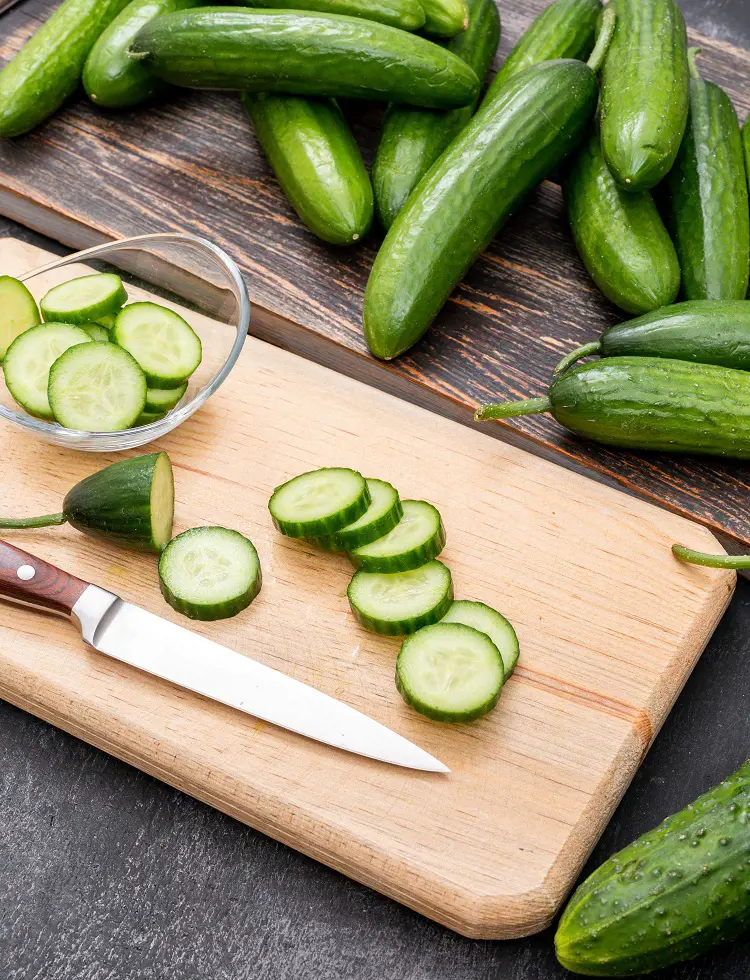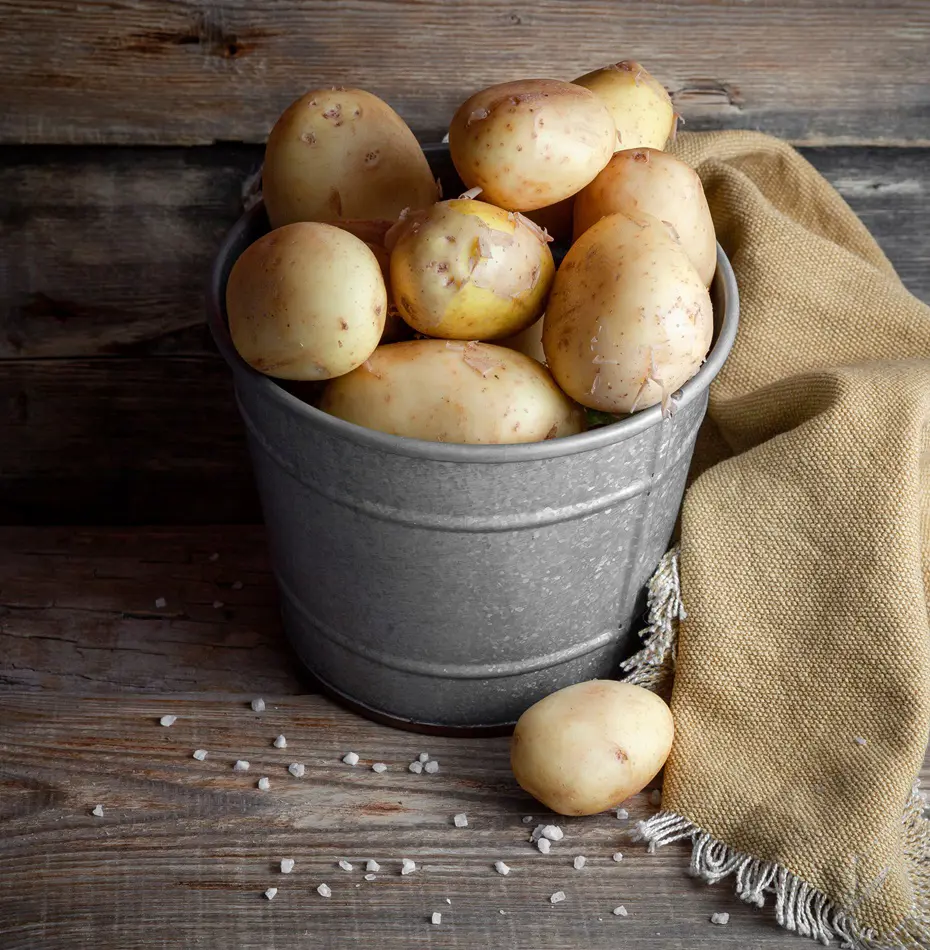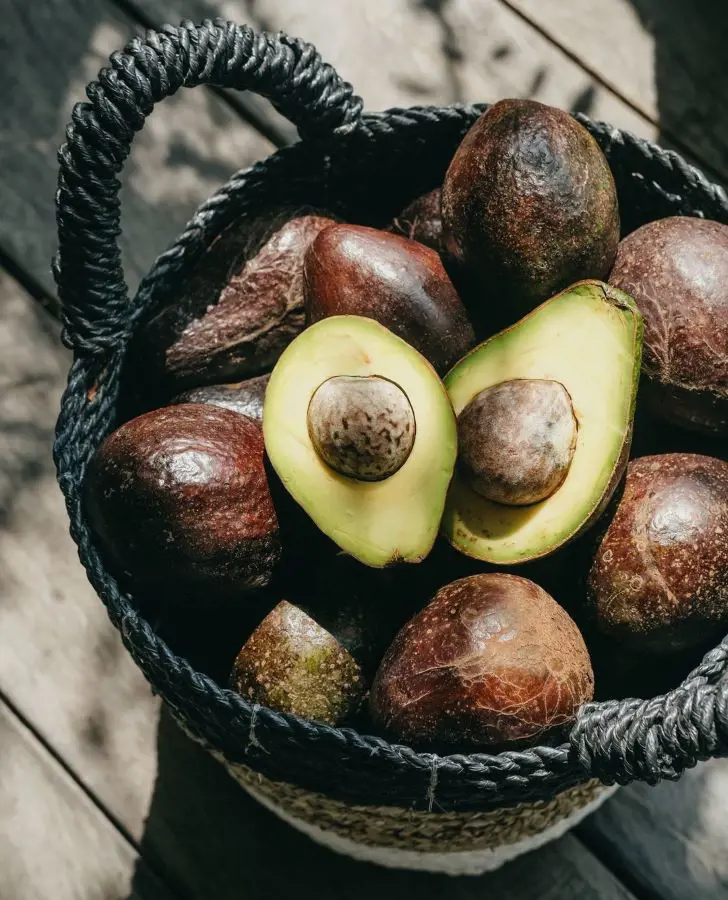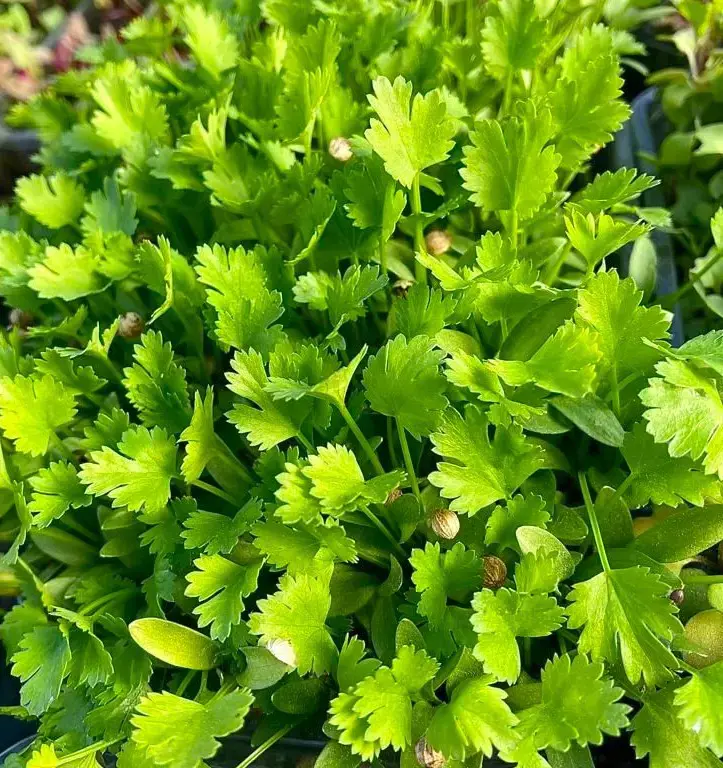How To Store Broccoli So That It Lasts Longer
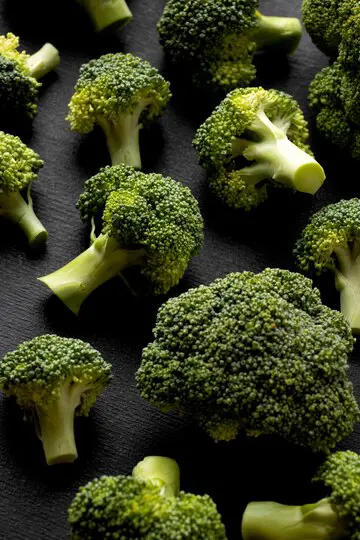
This post may contain affiliate links. If you make a purchase through links on our site, we may earn a commission.
Broccoli is celebrated for its tasty versatility and shines in dishes like fresh salads, roasted delights, steamed sides, and comforting casseroles. To savor its best flavors, proper storage is crucial.
Knowing how long broccoli stays at its best in each setting ensures this kitchen favorite remains a delightful addition to your meals. Before we learn how to store broccoli, let’s see some facts about broccoli:
How To Choose Broccoli Before Storing?
Selecting the perfect broccoli ensures you enjoy the best flavor and nutritional benefits. When choosing broccoli heads, prioritize the following characteristics for optimal freshness:
- Look for broccoli florets with a rich, dark green color. Avoid open blooms; opt for tightly closed ones.
- Choose broccoli with thin stalks and crisp leaves for a tender and fresh texture.
- Steer clear of broccoli with thick stems, as it may indicate aging and could have a woody flavor.
- Reject broccoli heads displaying yellowish color or small yellow flowers, as these are signs of aging and potential deterioration.
Now, let's dive deep into the easy and simple way to store broccoli to extend its shelf life:
1. Refrigeration

To preserve the freshness of broccoli, it is essential to refrigerate it promptly after purchase or harvest. Place the broccoli in the refrigerator's vegetable crisper drawer or a perforated plastic bag. The perforations in the bag facilitate proper air circulation, preventing the buildup of excess moisture.
Refrigeration helps maintain the vibrant green color, crisp texture, and nutritional integrity of the broccoli. This storage method inhibits bacterial growth and extends the shelf life of the vegetable. By following these steps, you ensure that the broccoli remains at optimal quality.
2. Moisture Control
To keep broccoli fresh, it's crucial to control moisture. Broccoli can wilt if it gets too damp. To prevent this, wrap the broccoli in a paper towel or put it in a bag with tiny holes before storing it in the veggie drawer of the fridge.
The paper towel or bag helps soak up any extra moisture, so the broccoli stays crisp. It's like giving the broccoli a comfy, dry home. This way, when you're ready to use it, the broccoli will still be fresh and tasty, making your meals more delicious and nutritious.
3. Maintain Temperature
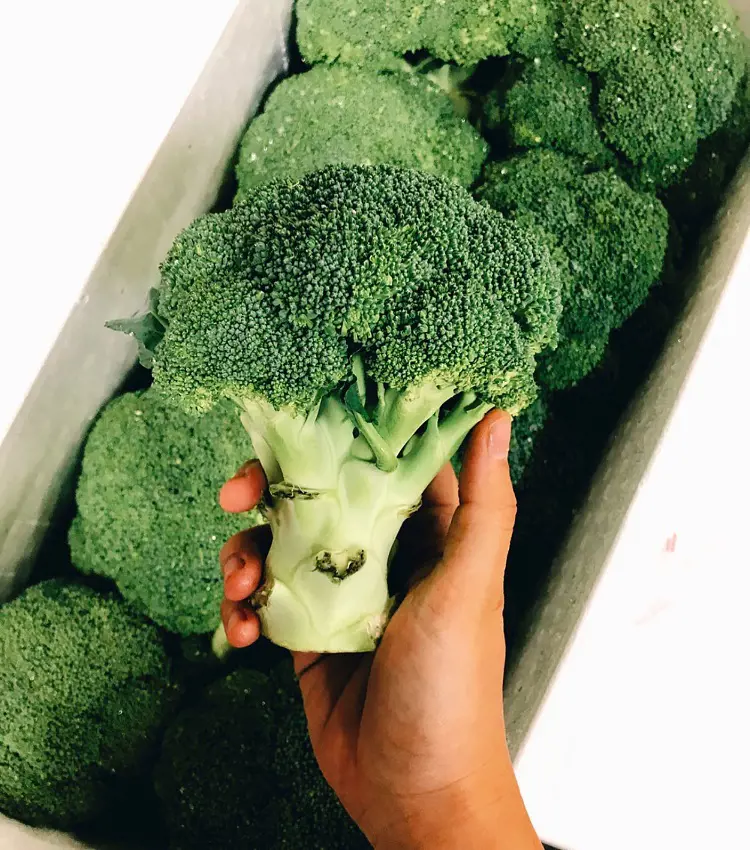
Maintaining the right temperature in your fridge is key to keeping broccoli fresh. Aim to keep the refrigerator between 32°F (0°C) and 40°F (4°C). This cool environment helps to preserve the crispness and nutrients of broccoli.
It's like creating a comfy home for your broccoli, ensuring it stays at its best until you're ready to enjoy it. So, next time you adjust the fridge settings, remember to keep it cool within this temperature range to make your broccoli last longer and stay delicious for your meals.
4. Avoid Freezing
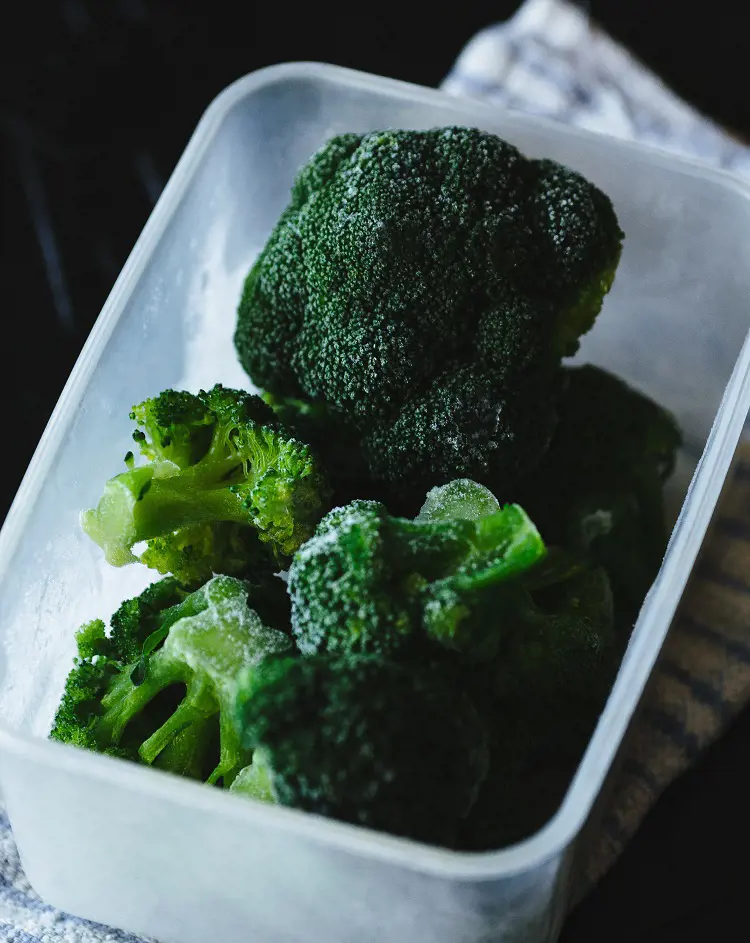
If you want to keep your fresh broccoli in top shape, avoid freezing it straight away. Freezing it without a little preparation can make it lose its quality and texture. Before freezing, take a moment to blanch the broccoli first.
Blanching involves quickly boiling it, and then cooling it down fast. This extra step helps lock in the goodness, preserving its taste and texture when you decide to thaw and use it later. So, remember, if you plan to freeze broccoli, a quick blanching session is the secret to keeping it at its best in the freezer.
5. Trimming and Cutting
Before storing broccoli, it's essential to trim the stalks, ensuring they are in optimal condition. Remove any yellowing or damaged parts to maintain freshness. If the broccoli is already cut, store it in an airtight container or a sealed plastic bag to prevent exposure to air, which can cause deterioration.
By taking these measures, you ensure that your broccoli stays vibrant and crisp, ready to be used in your favorite dishes. Proper trimming and storage practices contribute to an extended shelf life and a more enjoyable culinary experience.
6. Keep It Dry
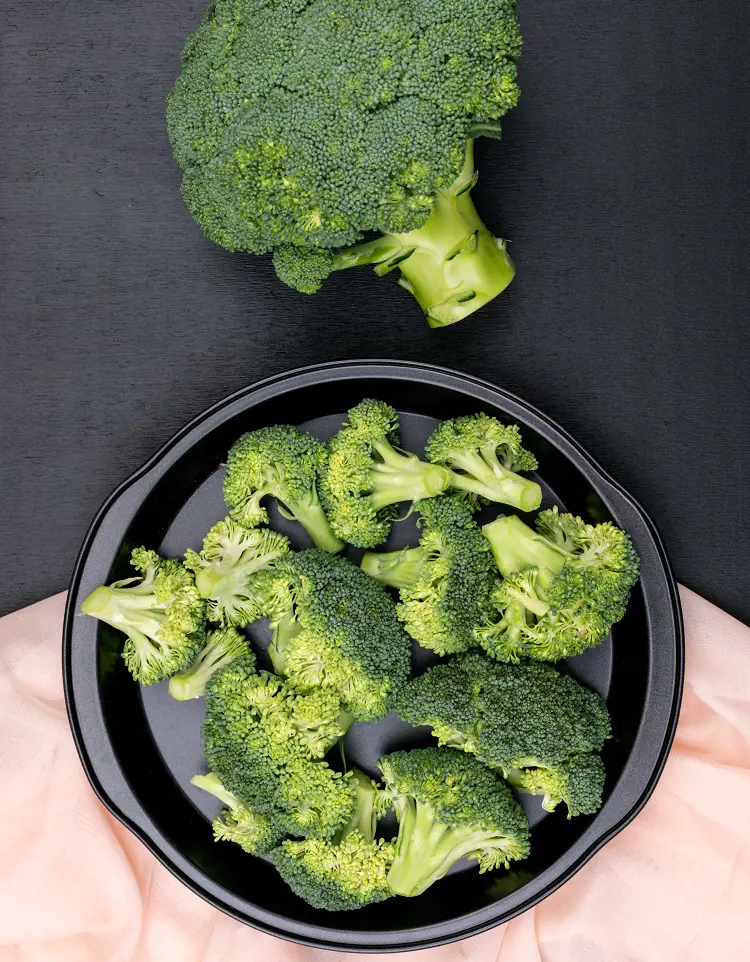
To safeguard broccoli from mold and decay, it's crucial to keep it dry before storing it in the refrigerator. Excess moisture acts as a breeding ground for these issues. After purchasing or washing, pat the broccoli dry with a paper towel or let it air dry thoroughly.
By doing so, you create an environment that hinders the growth of mold and preserves the vegetable's freshness. This simple step helps maintain the crispness and quality of the broccoli, ensuring it remains a tasty and nutritious addition to your meals.
7. Ethylene Sensitivity
Broccoli is ethylene-sensitive, making it vulnerable to the ripening effects of ethylene gas emitted by certain fruits such as apples and bananas. Ethylene can accelerate the aging process and affect the quality of broccoli. To preserve its freshness, store broccoli away from these ethylene-producing fruits.
This separation prevents premature ripening and maintains the desired texture and flavor of the broccoli. By being mindful of ethylene sensitivity and choosing appropriate storage locations, you ensure that your broccoli stays crisp and delicious for a more extended period.
8. Use Perforated Bags
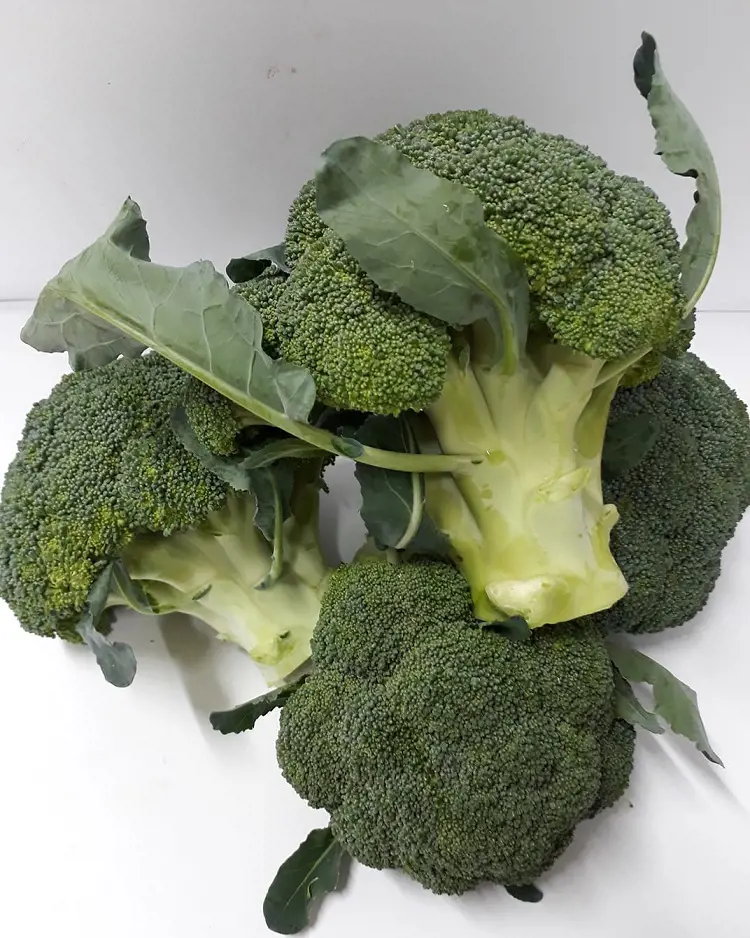
If you lack a perforated plastic bag, a simple solution to maintain the freshness of broccoli is to create ventilation in a regular plastic bag. Poking a few holes in the bag allows air circulation, preventing the buildup of excess moisture that could lead to wilting or mold.
Adequate ventilation is crucial for preserving the crispness and nutritional value of broccoli during storage. This practical approach ensures that the vegetable remains in optimal condition, even if you don't have specialized packaging. So, whether perforated or makeshift, ventilated bags contribute to an extended shelf life.
9. Store in the Original Packaging
Keeping broccoli in its original packaging, especially if it comes in plastic wrap, is a beneficial practice for maintaining its freshness. The original packaging is designed to protect the broccoli from excess moisture and external contaminants. It helps to preserve the vegetable's crispness, color, and nutritional quality.
The plastic wrap acts as a barrier, preventing the broccoli from drying out or becoming too moist. Additionally, the original packaging can provide some level of insulation, safeguarding the broccoli from temperature fluctuations in the refrigerator.
10. Check Regularly

Regular checks for signs of spoilage, including off smells, mold, or discoloration, are crucial. A quick visual inspection and a sniff can help you identify any deviations from its normal state. If you notice any part that appears compromised, promptly remove it.
This proactive approach prevents the spread of spoilage and maintains the overall quality of the remaining broccoli. By staying vigilant and addressing any issues promptly, you ensure that your broccoli stays in optimal condition, ready to enhance the flavor and nutrition of your meals.
Can You Can Broccoli?
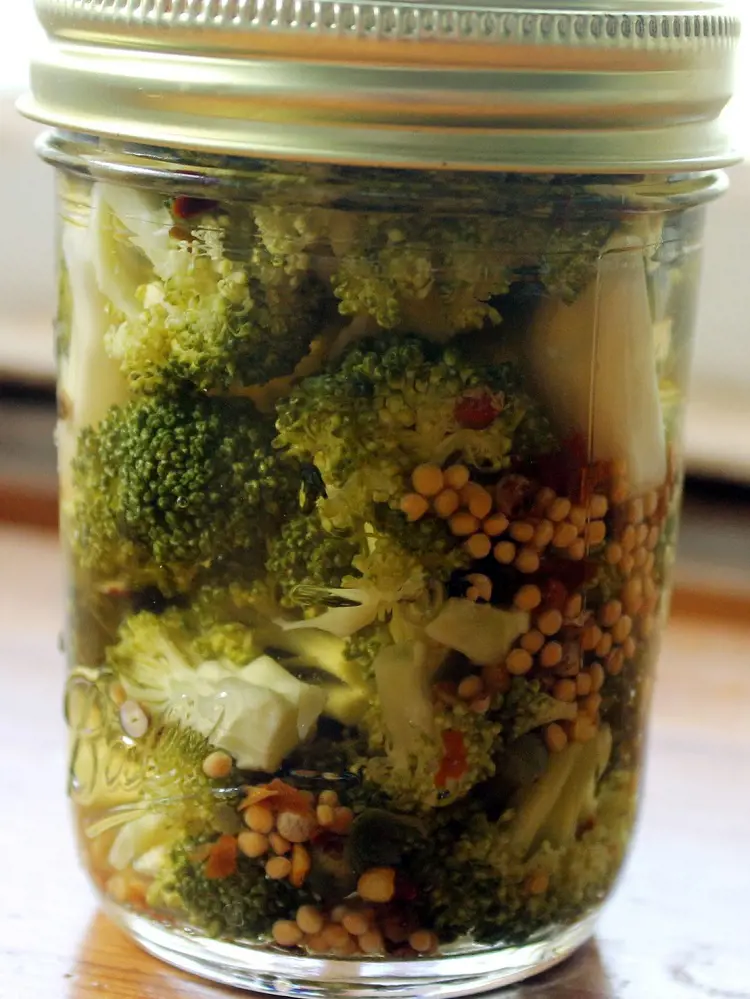
Yes, you can can broccoli for long-term storage using a pressure canner. Canning broccoli can be a convenient way to preserve this vegetable for later use. Here's a basic guide on how to can broccoli:
Ingredients and Equipment:
- Fresh broccoli
- Pressure canner
- Canning jars with lids and bands
- Boiling water
- Salt (optional)
- Lemon juice (optional)
Instruction To Can Broccoli
- Prepare Broccoli by washing it thoroughly and cut into desired pieces.
- Blanch broccoli in boiling water for 3-5 minutes and transfer to ice water to stop cooking.
- Prepare the jars by sterilizing jars, lids, and bands.
- Fill the jars by leaving 1-inch headspace and if you want then you can add salt as well.
- If you see any air bubbles, use a utensil to eliminate the bubbles.
- Secure the lids, tighten the bands, and wipe the jar rims.
- Give pressure to the canning by following the canner's instructions and guidelines.
- Allow the canner to cool, then remove the jars, check the sealed lids, and let it cool completely before storage.
How Long Does Broccoli Last?
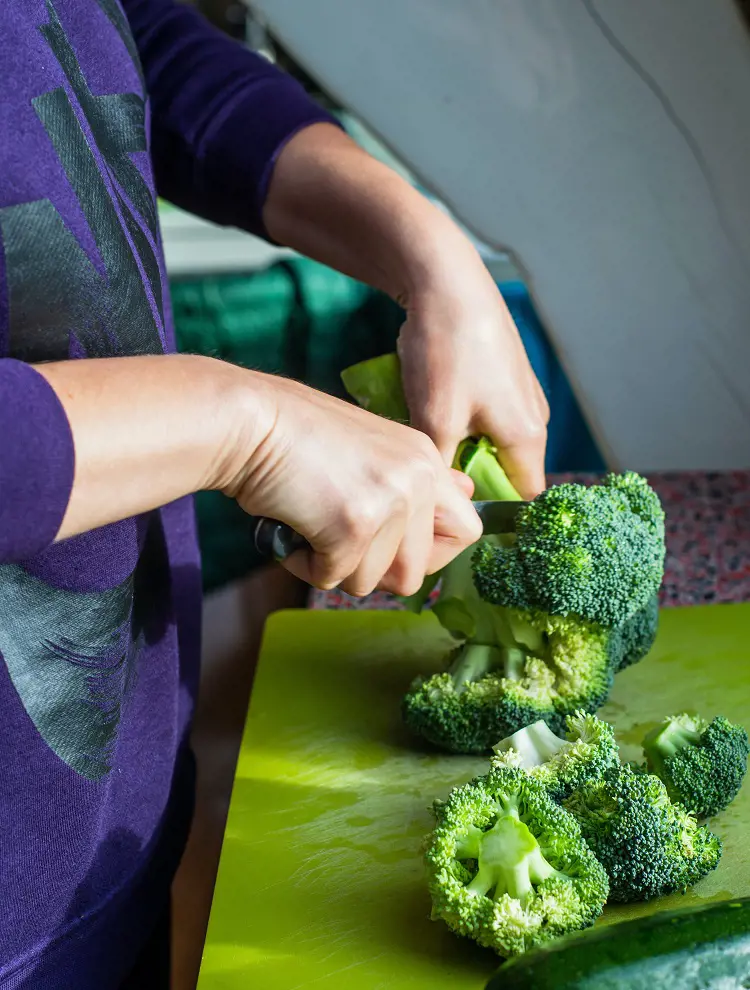
Room Temperature
Broccoli should not be stored at room temperature for extended periods, as it tends to wilt and lose freshness quickly. It is recommended to refrigerate broccoli for a longer shelf life.
Refrigerator
Fresh, raw broccoli typically lasts for about 1 to 2 weeks when stored in the refrigerator. To maximize its freshness, store it in a plastic bag with perforations or in the vegetable crisper drawer.
Cooked Broccoli
Cooked broccoli can be stored in the refrigerator for 3 to 5 days. It's essential to place the cooked broccoli in an airtight container to maintain its quality and prevent it from absorbing odors from the fridge.
Freezing Broccoli
When properly blanched before freezing, broccoli can last for 8 to 12 months in the freezer. This method helps preserve its color, texture, and nutritional content.
Canned Broccoli
Canned broccoli, when stored in a cool, dry place, can have a shelf life of 1 to 2 years. Always check the expiration date on the can for specific guidance.
How To Tell When Broccoli Has Gone Bad?

Identifying when broccoli has gone bad involves observing various signs of spoilage. Here are indications that broccoli may no longer be suitable for consumption:
- Off Smell: Spoiled broccoli often emits a foul or off-putting odor. If you notice any unpleasant or sour smells, it may be an indication of spoilage.
- Change in Color: Fresh broccoli has a vibrant green color. When it turns yellow, or brown or develops dark spots, it indicates aging and potential deterioration.
- Slimy Texture: If the broccoli feels slimy or overly moist to the touch, it has likely started to decay. Excess moisture encourages the growth of bacteria and mold.
- Mold Growth: Visible mold, either on the florets or stalks, is a clear sign of spoilage. Discard broccoli with any signs of mold.
- Wilted Appearance: Broccoli should have a firm and crisp texture. If it appears limp or wilted, it has likely lost its freshness and nutritional value.
- Unpleasant Taste: If you detect an unusual or unpleasant taste when sampling the broccoli, it's a strong indication that it has gone bad.
- Slimy Stalks: Check the stalks for sliminess. If they feel slimy or have a mushy texture, it's a sign of decay.
- Visible Decay: Inspect the broccoli thoroughly for any visible signs of decay, such as dark or soft spots. Trim off affected areas if possible, but if the decay is extensive, it's best to discard the entire piece.
Recent posts
How To Store
How To Store
How To Store Cucumbers
A good cucumber is cool, crunchy, and refreshing, but if you don't store it right, it can turn mushy and not good to eat. To keep cucumbers fresh, store them where they can get air and not too wet. Now, let's talk about different ways to keep cucumbe...
How To Store
How To Store Garlic Properly
Garlic is a kitchen pioneer important for adding flavor and depth to countless dishes. However, if stored incorrectly, garlic may lose its potency or even go bad. When stored properly a fresh garlic bulb can last up to six months otherwise, it will o...
How To Store
How To Store Potatoes - 15 Simple Tricks
Potatoes are a versatile vegetable loved for ages. From French fries to baked potatoes, there are many ways to enjoy them and they also naturally have a long shelf life. However, it is concerning that they can't last long without proper precautions. ...
How To Store
How To Store Carrots So They Last Longer
Carrots typically last for days and weeks at room temperature. If stored properly using the right technique, it can last for several months too. From harvesting to freezing, several ways can help extend the carrots’ shelf life. In this gu...
How To Store
How To Store Avocados Long Term
Avocado is a delicious, yet highly perishable fruit with nutritive benefits. Its high metabolic rate is the major contributing factor to its shorter shelf-life. The shelf-life of avocados ranges from 3-4 weeks when stored at the ideal temperature and...
How To Store
How To Store Cilantro Leaves
Cilantro is an indispensable item in our kitchen. Cilantro's seeds, leaves, and stems can all be consumed and can be used in many dishes around the world including sauces, soups, curries, etc. Cilantro is a good option because of its pleasant scent, ...
